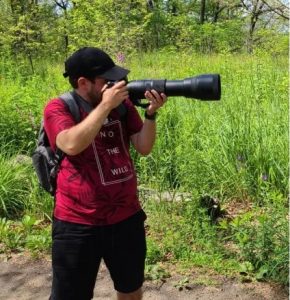“The combination of pandemic and technology has shot birding into the stratosphere.”
“A new flock of amateur birders are feeding information back to researchers studying population changes.”
.
The best time of year to spot birds is normally considered to be winter:
Big Garden Birdwatch – Vision Group for Sidmouth
And one in particular bird to spot then is the blue tit:
Blue Tit Bird Information – The Only Guide You’ll Ever Need
By the time of year we now find ourselves in, most young birds will have fledged:
How Long Does it Take for Bird Eggs to Hatch? The Nesting Cycle
For a slightly different take on birds, a great place to go is the US blog ‘Chipper Birds’:
Blogs About Birds – Chipper Birds
With all sorts of practical guides, including help on what equipment to get:
Best Monocular for Bird Watching: Find the Best One For You
In fact, now is proving an incredibly popular time for birding, with this piece from the Mail last month:
Bird-watching cool? Yes, really!
The combination of pandemic and technology has shot birding into the stratosphere, particularly for millennials and Gen-Zers. Especially popular is the mobile phone app eBird, now the largest worldwide database of bird sightings with over 800,000 users.
Meanwhile, the number of people using the RSPB’s online bird identification tool shot up by 95 per cent in 2020. Many birders logged their observations in the RSPB’s Big Garden Birdwatch 2021 – an annual survey held over three days, where people across Britain record and submit the birds they see in their gardens. For 40 years the survey has provided valuable data on the UK bird population. This year’s survey was the biggest ever, with more than a million people taking part. There was a notable increase in young birders – three times more 18- to 29-year-olds took part than usual, and twice as many 30- to 34-year-olds – as well as an increase in people living in urban areas.
Bird-watching cool? Yes, really! | Daily Mail Online
It’s happening everywhere, as with this piece from Canada from last week:

How birding’s pandemic popularity is expanding data collection for science
A new flock of amateur birders are feeding information back to researchers studying population changes
When a freelance photographer recently saw himself with extra time on his hands and no humans to photograph, he turned his lens to nature. Toronto resident Maxwell Giffen, 29, is one of the many who recently joined birding apps after the hobby became increasingly popular during the COVID-19 pandemic. An influx of people like Giffen, who are tracking what they see digitally, is creating new data sources that can be useful to scientists and environmentalists for monitoring bird populations and habitats.
Giffen said technology, including birding apps and social media groups to connect with other people, was a huge reason why he got so involved in bird watching. “I was obsessed with eBird. I would go on it several times a day since it was also the way I used to find birds,” said Giffen of one popular app.
Apps like eBird, one of the world’s largest databases for bird observations, can assist hobbyists in identifying various species of animals and plants, easing a previously time-consuming and challenging process. This form of crowdsourced data gathering, dubbed citizen science by analysts, can also help bolster broader knowledge of how ecological changes affect multiple species…
How birding’s pandemic popularity is expanding data collection for science | CBC News